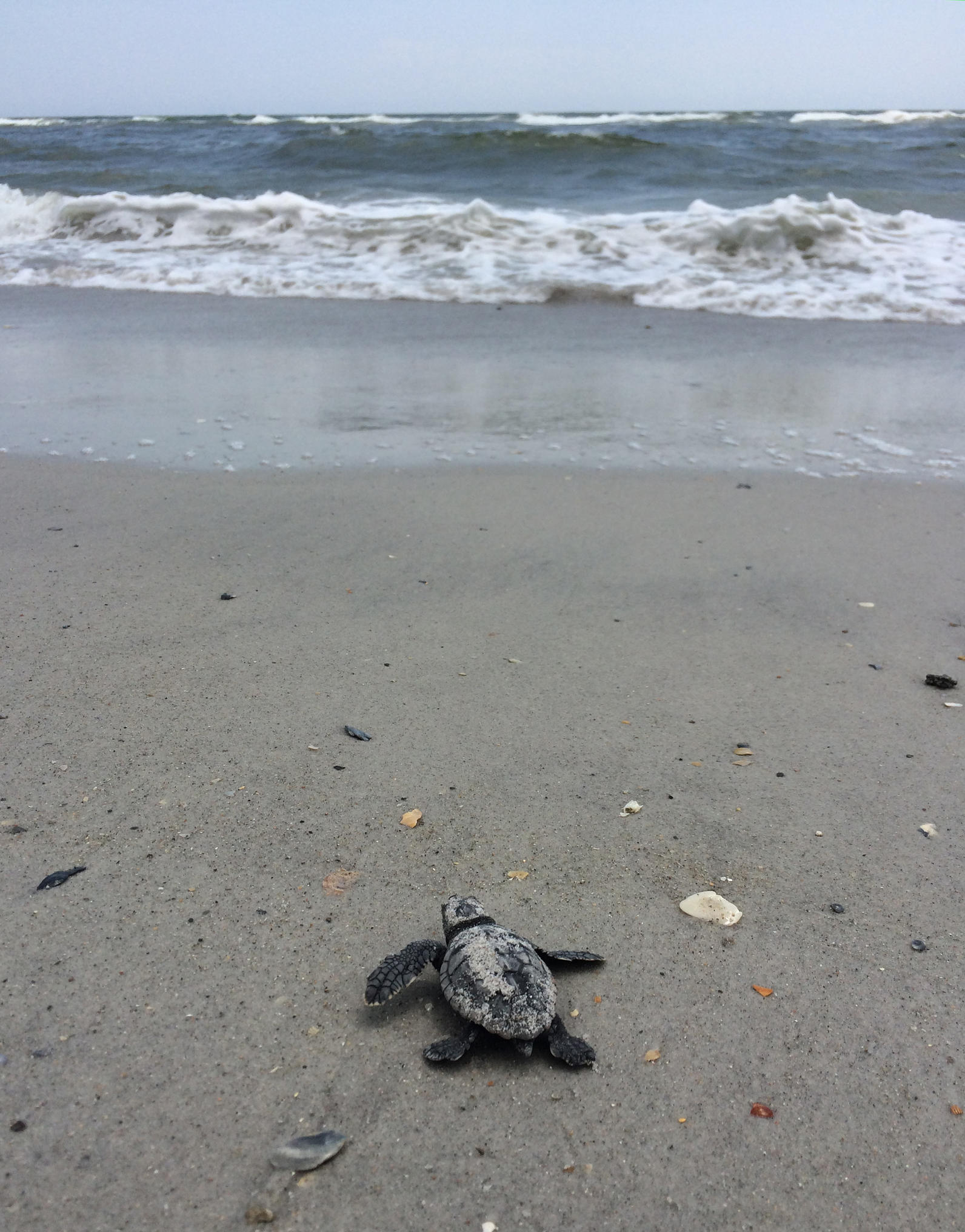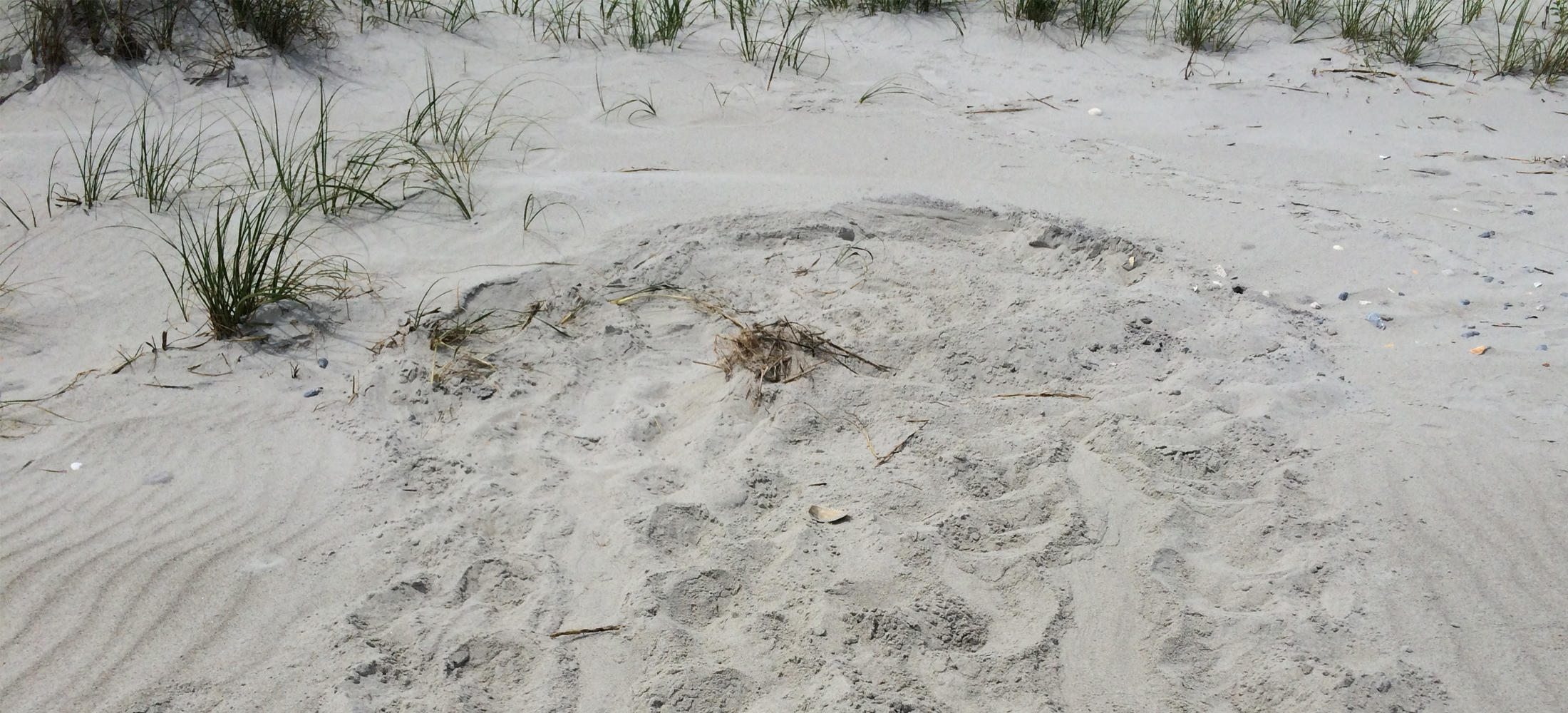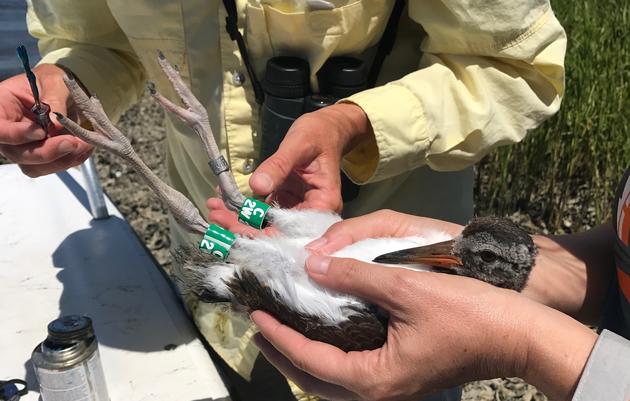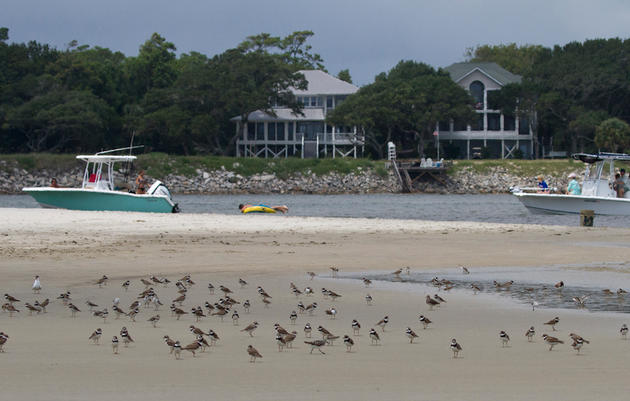Every year, Audubon North Carolina monitors sea turtle nesting activity on Lea-Hutaff Island. So far, the only species found nesting has been the loggerhead sea turtle, the most common nesting sea turtle in North Carolina.
For most of the history of the Lea-Hutaff sea turtle project, we have seen sea turtle nest numbers alternate between years with relatively few nests (0-6) and relatively many nests (more than 6).
In the last few years, we’ve seen an increase in the number of nests, both in our “high” years and “low” years. We don’t know the reason for this increase, but this year the sea turtles surpassed their previous high number of nests on the island—15 in 2015—and laid 20 nests.
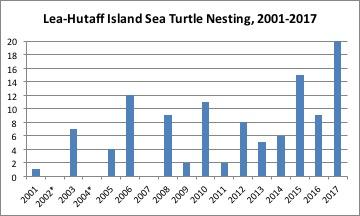
After each nest has hatched—incubation is about 60 days— we excavate each nest to inventory the contents and find out how many eggs hatched.
Most of the 20 nests hatched successfully, although three had low (less than 50%) hatching success. These nests were heavily flooded by high tides and rough waves churned up by the distant passage of Hurricanes Jose and Maria this fall. If sea turtle nests are overwashed near hatching time, eggs or hatchlings that haven’t emerged yet can be drowned. (Nests that are flooded earlier in incubation usually do just fine.)
Three additional nests could not be inventoried at the end of the season because their exact location was lost, also as the result of stormy conditions. However, an estimated 1,458 loggerhead hatchlings made it to the ocean this year, another record number for Lea-Hutaff Island.
